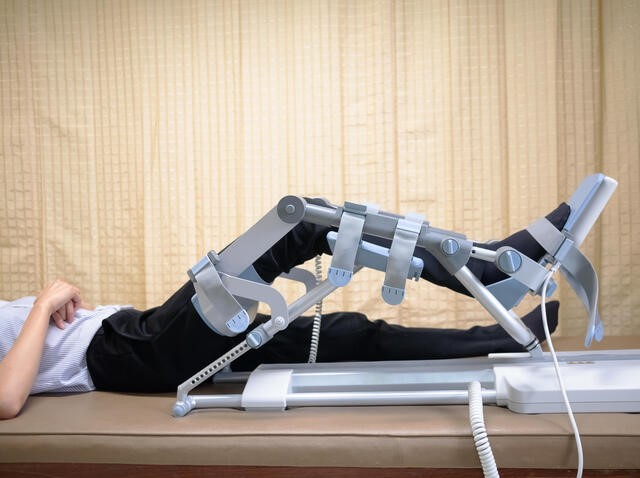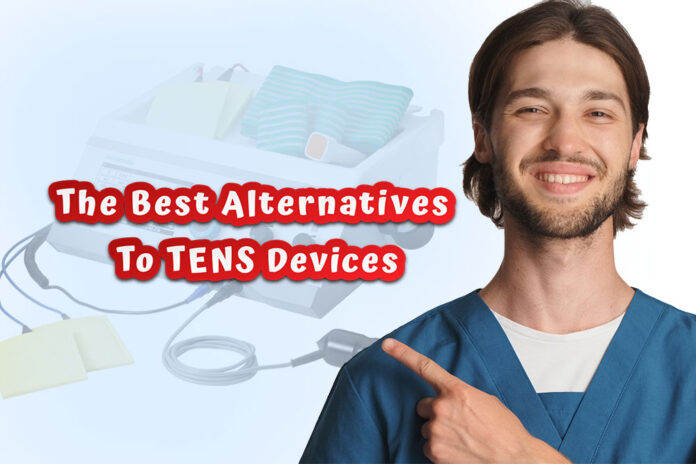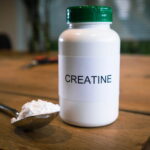Transcutaneous Electrical Nerve Stimulation devices are a non-invasive way to relieve pain. They deliver a small electrical current through electrodes placed on the skin that stimulate nerve fibers and block pain signals from reaching the brain. These devices can be used for a number of different types of conditions, including chronic back and joint pain and labor pains. However, not everyone is comfortable with using TENS devices due to their cost or because they may not be as effective as advertised by manufacturers. There are many alternatives to TENS devices that can be used to treat pain and are much more affordable. For example, Solio Alpha Plus, a pain relief device, is one of the best alternatives to TENS device against pain. It provides the same relief as TENS devices but with more benefits and at a fraction of their cost. In this blog post, we have discussed some alternatives to TENS devices that you can use to help relieve your pain.
Transcutaneous Electrical Nerve Stimulation Devices
Transcutaneous Electrical Nerve Stimulation devices are small, battery-powered machines that generate electrical impulses that stimulate the nerves. They’re used to treat chronic pain, including back pain, arthritis, and headaches. TENS devices work by sending gentle electrical pulses through electrodes placed on your skin. The signals interfere with the transmission of pain messages to your brain. TENS therapy is generally safe; however, you should talk to your doctor before using it.
Alternatives To TENS Devices
TENS devices work by sending electrical impulses to the nerves in your body. They’re used for pain relief, muscle relaxation, and even pain relief during labor. Because of the intense sensation they cause, some people find that they can’t tolerate wearing a TENS device for more than 20 minutes at a time. This is where some alternative devices and methods come in.
1. Continuous Passive Motion Technique

If you’re unfamiliar with CPM, it’s a physical therapy technique that uses your body’s natural movements to help heal. It’s most commonly used on patients who have had surgery but can also provide relief from other types of pain. CPM is done by moving whatever part of your body feels stiff or sore back and forth until you feel some relief. This can include moving your arms, legs, or neck in different directions for about 20 minutes until the pain disappears completely. You should only use this method if you have been given permission by a healthcare professional first (or if you know what you’re doing). Otherwise, they might tell you not to do it because they think it could cause more damage than good!
It’s important to remember that while CPM can be very helpful in treating certain types of injuries—especially ones caused by overuse—it won’t work for everyone all the time; everyone has different needs when it comes
2. Acupuncture

Acupuncture is a method of pain relief that has been practiced for thousands of years. Unlike TENS devices, acupuncture is not electrical and does not require connecting the device to your skin. Instead, acupuncture needles are inserted into different points of your body to stimulate certain nerves. The needles’ stimulation can provide local pain relief or help with swelling around an injury (if you’re injured). The benefits of acupuncture last longer than TENS therapy because they address root causes rather than just superficial symptoms like muscle tension or inflammation. Acupuncture also provides relaxation, which many people find very peaceful and relaxing!
3. Psychological Methods
Psychological methods include relaxation techniques, guided imagery, and medical hypnosis. Many people feel that these techniques are a better fit for their needs than TENS devices because they are less invasive. However, they must be used in conjunction with the device to realize their full potential.
Relaxation techniques involve deep breathing exercises, muscle relaxation, and mindfulness meditation to help you learn how to relax under stressful situations so that your body isn’t working against itself in pain management efforts. Guided imagery involves using your imagination to visualize yourself somewhere pleasant while listening to an audio recording of someone calmly guiding you through this process. Medical hypnosis helps you focus on your pain management goals by repeating positive affirmations or visualizations over and over again until they become ingrained in your subconscious mind—and thus, easier for the conscious part of your brain to access when needed later on down the road.
Final Thoughts
TENS devices have been around for a long time, but there are some great alternatives that might be better for you. If you’re looking for relief from pain without having to deal with the hassle of wires or pads on your skin, these options may be worth considering.
Read Also
- Why the Keto Diet Works for Some People—and Fails Dramatically for Others: An Ayurvedic Breakdown for Modern HealthcareThe keto diet has dominated weight-loss culture for years. For some people, it produces rapid fat loss, stable energy, and improved mental clarity. For others—especially those who gain weight easily—it leads to burnout, digestive distress, rebound weight gain, high cholesterol, and a metabolism that feels slower than before. Healthcare often frames this as a discipline… Read more: Why the Keto Diet Works for Some People—and Fails Dramatically for Others: An Ayurvedic Breakdown for Modern Healthcare
- How to Choose the Best Assisted Living Facility for SeniorsAre you looking for the right assisted living facility for a senior loved one? Choosing a place can feel overwhelming. There are many factors to consider, from care services to the environment. Safety, comfort, and social opportunities play important roles in daily life. Each senior has unique needs and preferences that must be met. Understanding… Read more: How to Choose the Best Assisted Living Facility for Seniors
- Burn Smart, Not Hard; Shape Burn: Clean Protein for Weight ManagementYou want to feel light, strong, and confident. You don’t want crash diets or fake promises. You need a plan that works with your body, not against it. That’s where Shape Burn comes in. You can burn fat without losing strength. You can eat better and stay full. You can manage weight in a way… Read more: Burn Smart, Not Hard; Shape Burn: Clean Protein for Weight Management
- Creatine Basics: How Much Is 5g, How Much Water You Need, and Whether Pills or Powder Work BetterIf you’ve ever walked into a supplement aisle or scrolled through fitness TikTok, you’ve probably seen people talking about creatine — usually with a shaker bottle in hand and promises of better workouts and faster gains. And honestly? They’re not wrong. Creatine is one of the most researched and effective supplements for muscle strength, recovery,… Read more: Creatine Basics: How Much Is 5g, How Much Water You Need, and Whether Pills or Powder Work Better
- Understanding Breast Cancer in Men: Key Facts and SymptomsBreast cancer is often thought of as a disease that only affects women. However, men can develop it too. Although it is less common, early detection and awareness are important. Read on to learn key facts, symptoms, and ways men can take action to protect their health. How Common Is Breast Cancer in Men? Breast… Read more: Understanding Breast Cancer in Men: Key Facts and Symptoms






